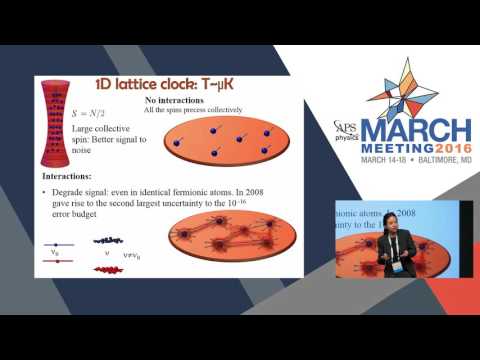Description:
Explore new perspectives on quantum simulation with ultracold atoms in this 34-minute conference talk by Ana Maria Rey at the Fred Kavli Special Symposium, APS March Meeting 2016. Delve into the complexities of interacting electrons in solids and liquids, and discover how precisely engineered ultracold gases serve as powerful tools for unraveling challenging physical problems. Learn about using alkaline-earth atoms, the basis of the world's most precise atomic clocks, to investigate complex many-body phenomena and magnetism. Examine the potential of atomic clocks as unique quantum laboratories for exploring new forms of matter with no known counterparts in nature. Cover topics such as ultra-cold matter, alkaline-earth atoms, many-body physics with clocks, Ramsey spectroscopy, P-wave interactions, SU(N) symmetry, orbital magnetism, scattering parameters, dipolar interactions, Weyl particles, and experimental implementations. Gain insights into the promising future of alkaline-earth atoms in quantum simulation and their potential applications in advancing quantum science and technology.
Read more

New Perspectives on Quantum Simulation with Ultracold Atoms
Add to list
#Conference Talks
#APS Physics
#Science
#Physics
#Magnetism
#Atomic Physics
#Ultracold Atoms
#Computer Science
#Quantum Computing
#Quantum Simulation